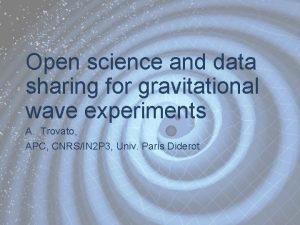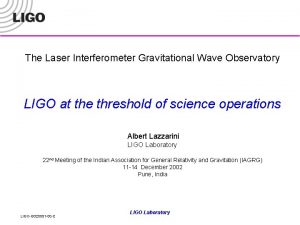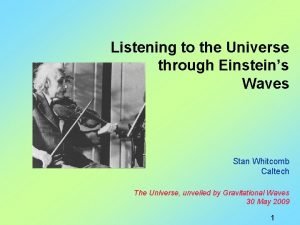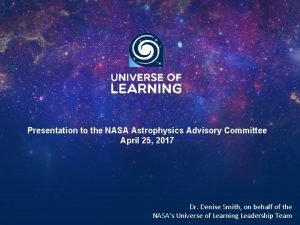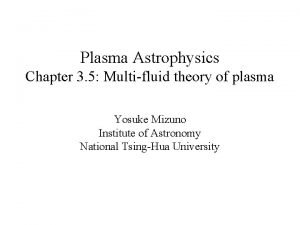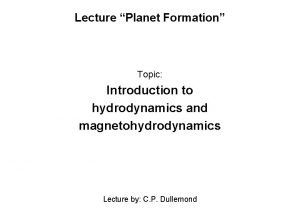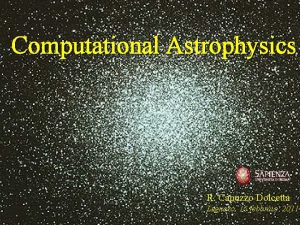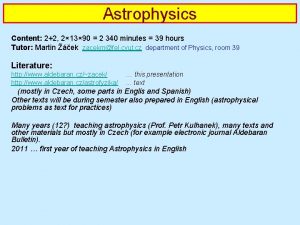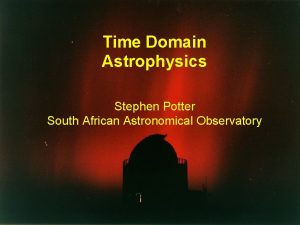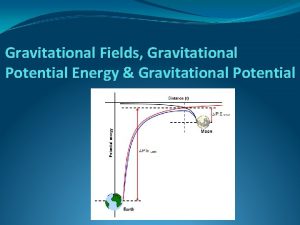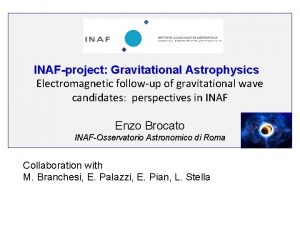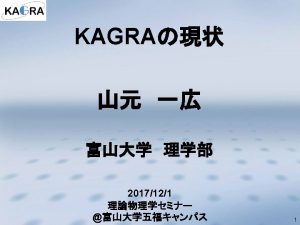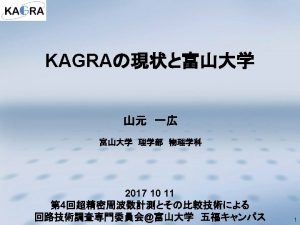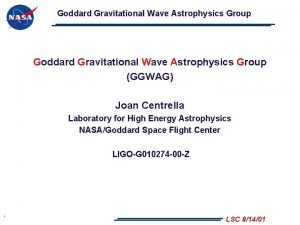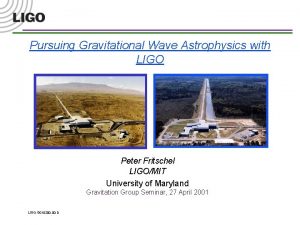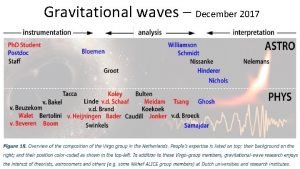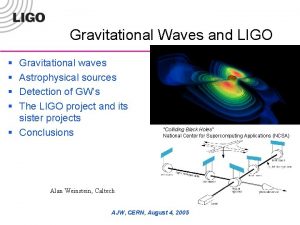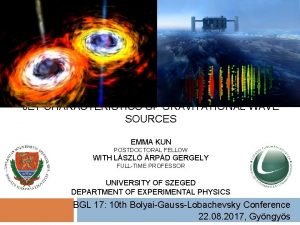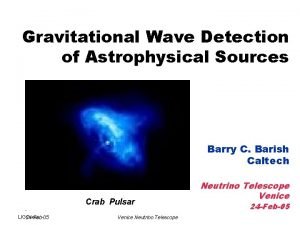The Astrophysics of Gravitational Wave Sources Conference Summary












- Slides: 12

The Astrophysics of Gravitational Wave Sources Conference Summary: Ground-Based Detectors (1 -104 Hz) Kimberly New, LANL

Detection & Data Analysis: LIGO & GEO’s science runs Brady & Mavalvala • high sensitivity, large bandwidth, hours of coincident operation • searches – NS/NS chirps, bursts, known pulsars, stochastic bkgd. • techniques used • science implications

Detection & Data Analysis: Detectors in 2012 Finn • interferometers - sensitivity improvements – <50 Hz: improve seismic isolation • active isolation • multiple levels of suspension – 50 -200 Hz: mitigate thermal noise • suspension system (increase mass, used fused silica ribbon) • test masses (sapphire) – >200 Hz: reduce shot noise • increase laser power

Detection & Data Analysis: Detectors in 2012 Finn • resonant acoustic detectors – current sensitivity 10 -22 near 900 Hz (1 Hz bandwidth) – future • spheres, spheres within spheres • 100 Hz bandwidth near 1 KHz (with improved amplifiers) • gravitational wave astronomy – NS/NS coalescence to 400 Mpc – stellar BH/BH coalescence to z=0. 5 – pulsars ( ~ 10 -6 at 102 Hz)

Sources: Binaries Schutz, Centrella, Bulik, Heyl • BH/BH Coalescence (Centrella, Schutz) – – – – LIGO: stellar mass BH/BH binary final coalescence signal will contain astrophysically rich info: spins, strong field GR simulations of vacuum field eqns. scale w/ mass & spin evolve single BHs for 103 M ! binary BHs for 102 M (~orbital period) ! “Discovery Channel” simulation of merger (AEI) simulation of ringdown w/Lazarus perturbative code remaining numerical issues • stability (formalism, gauge choices, boundary conditions) • physical initial data • waveform extraction

Sources: Binaries Schutz, Centrella, Bulik, Heyl • chirp mass measurement could constrain binary evolution – parameter studies with population synthesis code (Bulik, Kalogera) – compact binary mass distribution: “fingerprints” – most evolution input parameters could be constrained with ~100 chirp mass observations • effects of r-mode instability on LMXBs (Heyl) – r-mode saturation – detection with LIGO? – EM signatures?

Sources: Intermediate-Mass Black Holes Mushotzky, van der Marel, Miller • observations suggest existence • formation channels: Pop III stars, cluster interactions • GWs – 10 -50 M , 10 s of LIGO II detections per year – > 100 M , frequency generally too low for LIGO (ringdown? )

Sources: Collapse Mezzacappa, Fryer • Core collapse supernovae – precision modeling of macro & micro physics is the goal – steps along the way indicate sensitivities (e. g. , neutrino transport, EOS, general relativity) – multi-D simulations with multi-frequency neutrino transport don’t yet yield explosions – GW characteristics sensitive to EOS/GR (not as sensitive to neutrino transport) – new 3 D SPH simulations of 15 M stars (Fryer & Warren) • GWs from bar instability detectable with LIGO II (100 cycles, 10 Mpc) • GWs from proto-NS convection detectable for Galactic SNe

Sources: Collapse Mezzacappa, Fryer • Pop III, first generation stars – massive (no metallicity driven winds) – SPH collapse simulation of 300 M rotating star (Fryer et al. ) • core rotating fast enough to develop dynamical bar instability • high redshift puts GWs from bars & BH ringing out of LIGO II range • fragmentation could be detectable with LIGO II (but does it occur? )

Sources: GRBs Mészáros, Norris • GWs from GRBs – long GRBs, strong association with collapse – short GRBs, binary merger? – GW and GRB emission polarized; observations with third generation detector could measure 1% polarization in a year (Kobayashi & Mészáros) • Nearby GRB/GW sources? (Norris) – class of nearby GRBs associated with Type Ic SNe? (long pulses, long lags, soft spectra, subluminous) – ex. : GRB 980425/ SN 1998 bw (38 Mpc); GRB 030329 (680 Mpc) – concentrated near Supergalactic Plane; observed asymmetries – temporal separation of GRB and SNe? separate GW signatures? – could see 4 per year with LIGO II (50 Mpc, 100 cycle bar)

Sources: unexpected – dark matter? • 30% of universe • couple to gravitational radiation • GW observations could determine if distribution is smooth

In Summary • What information can we provide along the way to selfconsistent simulations? (timing info, etc. ) • Observation Informs - Finn • Is study of GWs from marginal sources worthwhile? – have “guaranteed” sources, “luxury” of studying others – often other drivers for study (SNe, GRBs, etc) – today’s marginal source can become tomorrow’s observed source (galactic supernova)
 Gravitational wave open science center
Gravitational wave open science center Gravitational wave
Gravitational wave Gravitational wave
Gravitational wave Giant gravitational wave could murmurs from
Giant gravitational wave could murmurs from Giant gravitational wave detectors hear murmurs
Giant gravitational wave detectors hear murmurs Print sources of information
Print sources of information Importance of water management
Importance of water management Nasa astrophysics advisory committee
Nasa astrophysics advisory committee Astrophysics equations
Astrophysics equations Astrophysics equations
Astrophysics equations Astrophysics
Astrophysics 13,90/2
13,90/2 Time domain astrophysics
Time domain astrophysics
